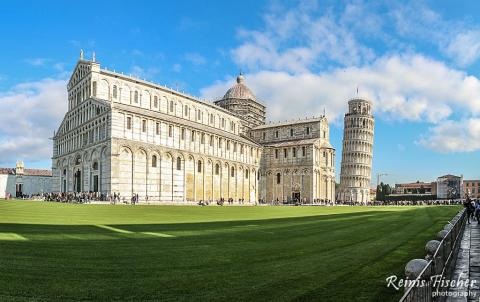We all have heard about Pisa tower, I won't be too original by saying - it's that leaning tower located somewhere in Italy.
At the end of 2015 I had a chance to visit this place second time in my lifetime (my mom, told me that I was here back in 1990 or 1991, but was so tired that refused to leave our tourist bus and took a lovely nap instead of wondering at this oblique tower).
This time I felt very energized, armored with a tripod and a lot of new photography skills I have learnt since I started digital photography school project. I experimented a lot with HDR and Panorama photography at Tower of Pisa. The result? Take a look:
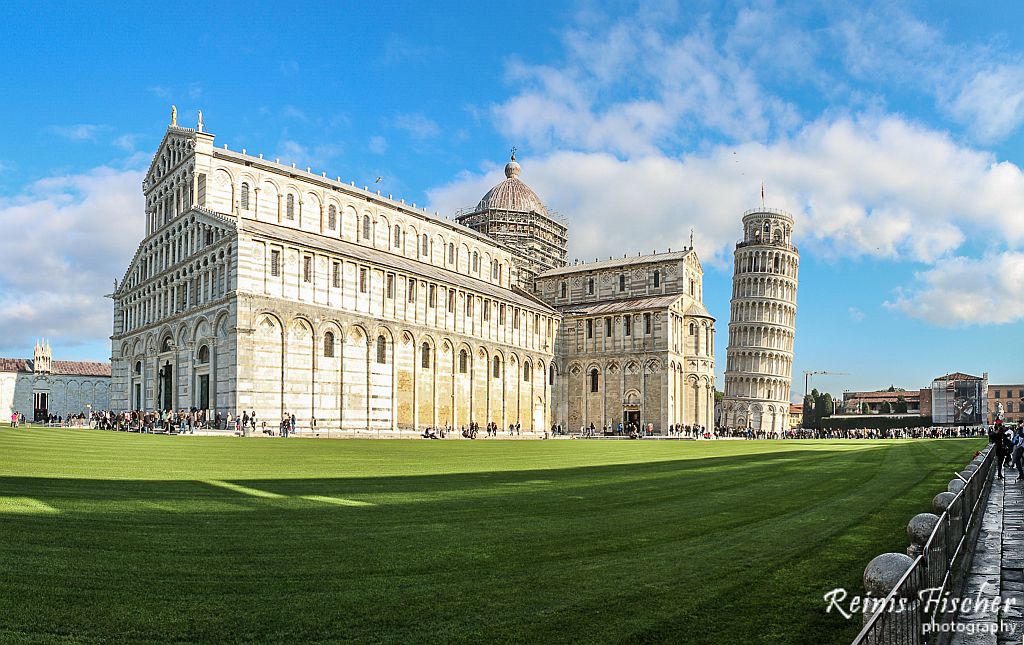
Pisa tower in Italy
It is situated behind the Cathedral and is the third oldest structure in Pisa's Cathedral Square (Piazza del Duomo) after the Cathedral and the Baptistery.
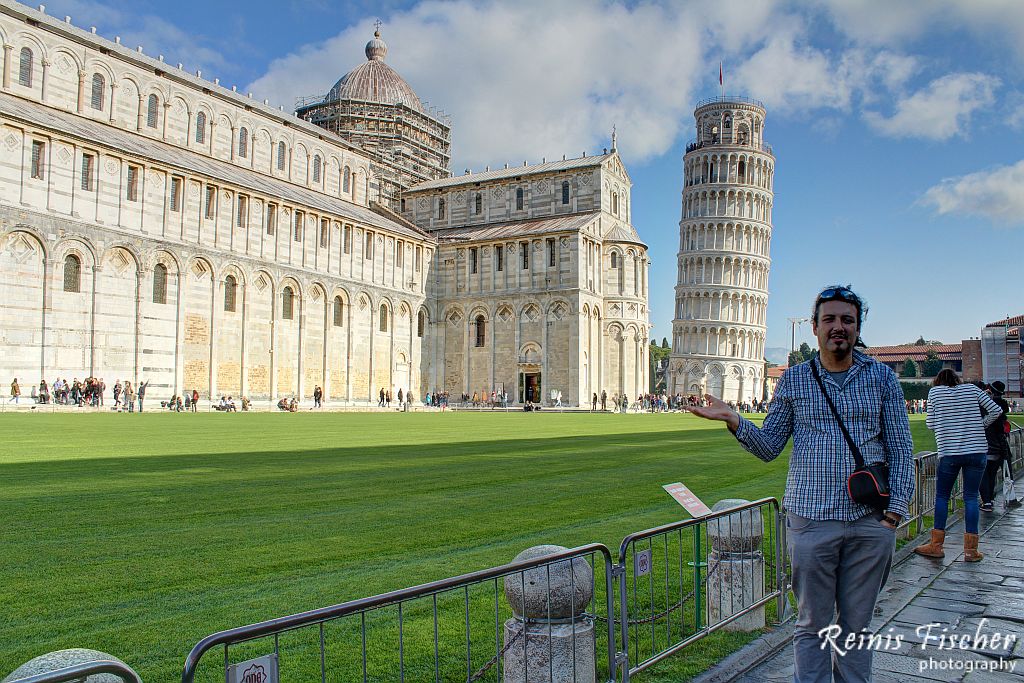
Author of this blog captured in action
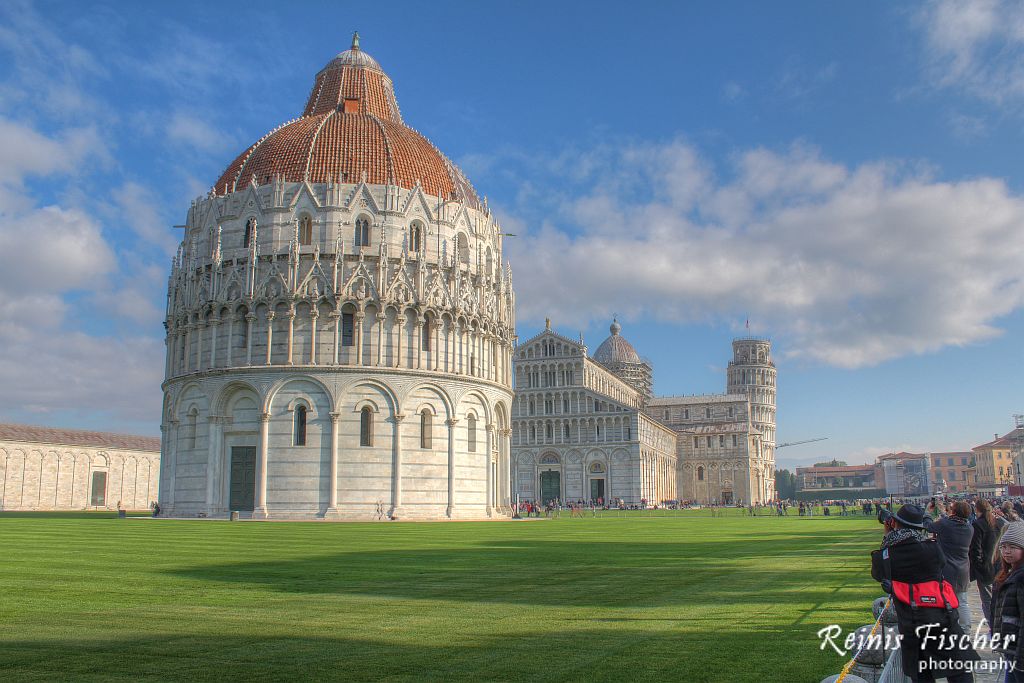
Cathedral near Pisa tower
The Piazza dei Miracoli, formally known as Piazza del Duomo (Italian: Cathedral Square), is a wide walled area located in Pisa, Tuscany, Italy, recognized as an important center of European medieval art and one of the finest architectural complexes in the world. Considered a sacred area by its owner, the Catholic Church, the square is dominated by four great religious edifices: the Pisa Cathedral, the Pisa Baptistry, the Leaning Tower of Pisa, and the Camposanto Monumentale(Monumental Cemetery).
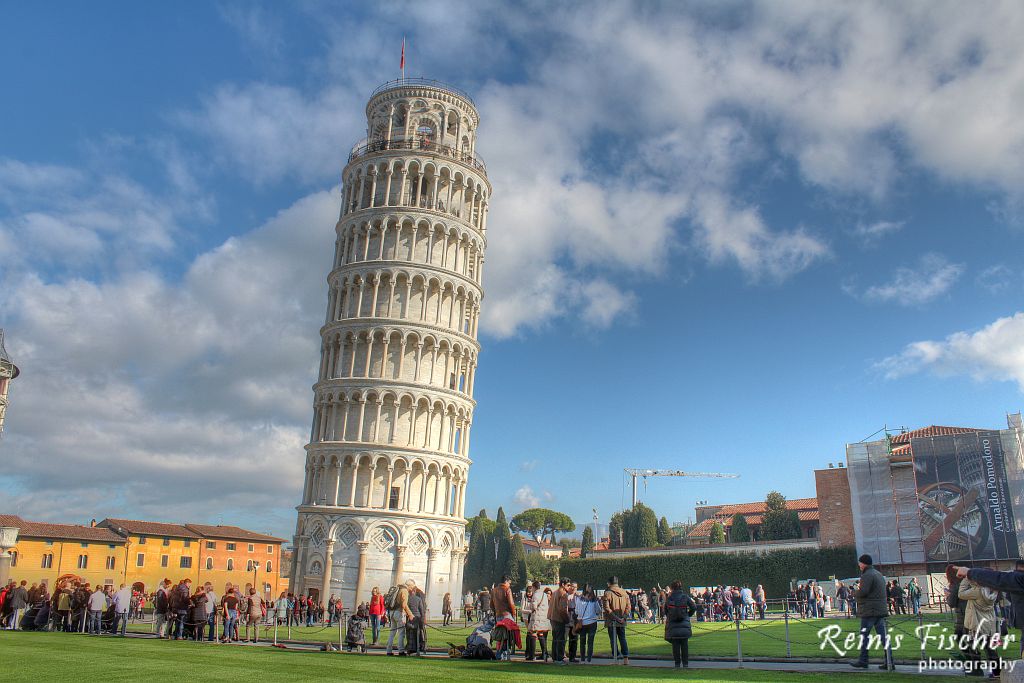
Leaning tower of Pisa
As you can see it is a very popular tourist spot in Italy.
There has been controversy about the real identity of the architect of the Leaning Tower of Pisa. For many years, the design was attributed to Guglielmo and Bonanno Pisano,a well-known 12th-century resident artist of Pisa, famous for his bronze casting, particularly in the Pisa Duomo. Bonanno Pisano left Pisa in 1185 for Monreale, Sicily, only to come back and die in his home town. A piece of cast with his name was discovered at the foot of the tower in 1820, but this may be related to the bronze door in the façade of the cathedral that was destroyed in 1595. However, recent studies seem to indicate Diotisalvi as the original architect due to the time of construction and affinity with other Diotisalvi works, notably the bell tower of San Nicola and the Baptistery, both in Pisa. However, he usually signed his works and there is no signature by him in the bell tower which leads to further speculation
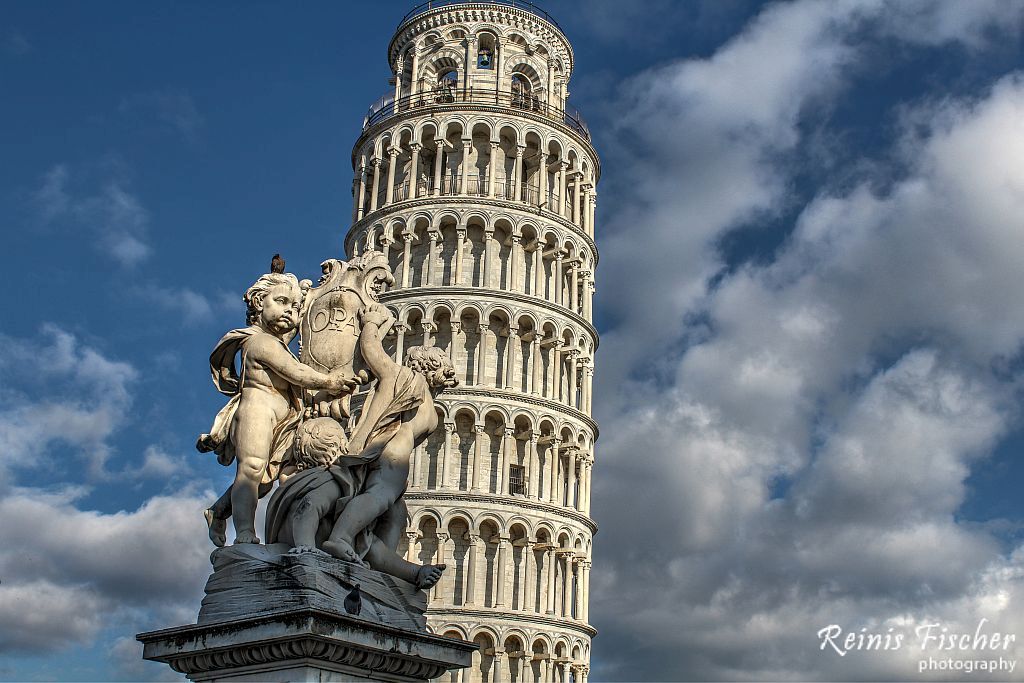
Pisa tower in Italy
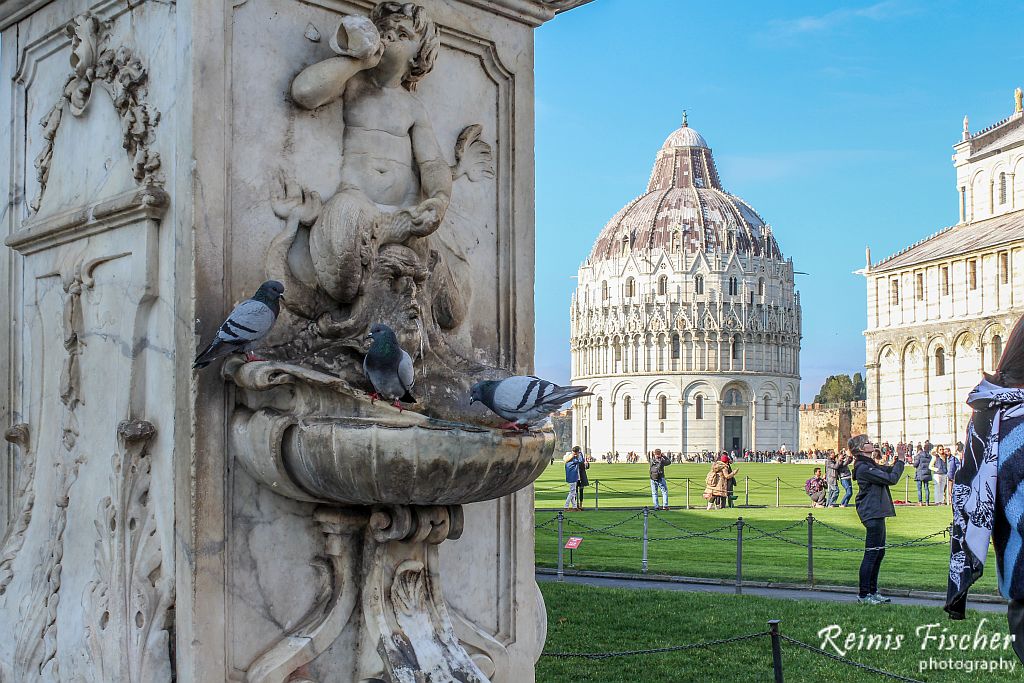
Pigeons at Pisa
About Tower of Pisa
The Leaning Tower of Pisa or simply the Tower of Pisa is the campanile, or freestanding bell tower, of the cathedral of the Italian city of Pisa, known worldwide for its unintended tilt.
It is situated behind the Cathedral and is the third oldest structure in Pisa's Cathedral Square after the Cathedral and the Baptistery. The tower's tilt began during construction, caused by an inadequate foundation on ground too soft on one side to properly support the structure's weight. The tilt increased in the decades before the structure was completed, and gradually increased until the structure was stabilized (and the tilt partially corrected) by efforts in the late 20th and early 21st centuries.
The height of the tower is 55.86 metres (183.27 feet) from the ground on the low side and 56.67 metres (185.93 feet) on the high side. The width of the walls at the base is 2.44 m (8 ft 0.06 in). Its weight is estimated at 14,500 metric tons (16,000 short tons).[The tower has 296 or 294 steps; the seventh floor has two fewer steps on the north-facing staircase. Prior to restoration work performed between 1990 and 2001, the tower leaned at an angle of 5.5 degrees, but the tower now leans at about 3.99 degrees.This means that the top of the tower is displaced horizontally 3.9 metres (12 ft 10 in) from the centre.
